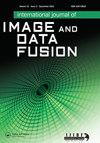非线性迭代法超宽带定位参数估计器性能分析
IF 1.8
Q3 REMOTE SENSING
International Journal of Image and Data Fusion
Pub Date : 2022-04-12
DOI:10.1080/19479832.2022.2064554
引用次数: 1
摘要
超宽带由于其精确的时间分辨率和良好的穿透性,是一种很有前途的室内定位技术。由于定位模型是非线性的,因此经常考虑迭代方法来解决定位问题。然而,定位系统容易变得不适配。迭代方法不容易收敛到全局最优解。本文分析了四种非线性迭代方法在病态配置下的收敛性。对于迭代,将选择三种类型的初始值。实验结果表明,重心法虽然可以正确收敛,但迭代次数过多,效率低下。此外,在具有良好初始值的情况下,高斯-牛顿方法可以有效地收敛,并且当选择较差的初始值时,它有时会收敛到错误的局部优化解。此外,正则化高斯-牛顿方法和闭式牛顿方法都可以用较少的迭代次数有效地收敛到全局最优。研究表明,闭式牛顿方法比其他方法具有更高的收敛效率。同时,为了充分利用测量值来提高精度,通常使用非迭代方法的结果作为迭代方法的初始值。本文章由计算机程序翻译,如有差异,请以英文原文为准。
Performance analysis of parameter estimator on non-linear iterative methods for ultra-wideband positioning
ABSTRACT Ultra-wideband is a promising technology in indoor positioning due to its accurate time resolution and good penetration. Since the positioning model is non-linear, iterative methods are often considered for solving the localisation problem. However, the positioning system is prone to become ill-posed. The iterative methods cannot easily converge to a global optimal solution. In this paper, the convergence property of four non-linear iterative methods is analytically reviewed under ill-conditioned configuration. For the iteration, three types of initial values are selected. Experimental results are given to demonstrate that although the barycentre method can converge correctly, it is inefficient with too many iterations. In addition, with a good initial value, the Gauss–Newton method can converge effectively, and it sometimes converges to a false local optimisation solution when selecting a bad initial value. Moreover, both the regularised Gauss–Newton method and closed-form Newton method can converge to the global optimum effectively with fewer iterations. This study shows that the closed-form Newton method has higher efficiency of convergence than the other methods. Meanwhile, to make complete use of measurements available to improve the accuracy, the result of non-iterative method is generally used as the initial value of the iterative method.
求助全文
通过发布文献求助,成功后即可免费获取论文全文。
去求助
来源期刊

International Journal of Image and Data Fusion
REMOTE SENSING-
CiteScore
5.00
自引率
0.00%
发文量
10
期刊介绍:
International Journal of Image and Data Fusion provides a single source of information for all aspects of image and data fusion methodologies, developments, techniques and applications. Image and data fusion techniques are important for combining the many sources of satellite, airborne and ground based imaging systems, and integrating these with other related data sets for enhanced information extraction and decision making. Image and data fusion aims at the integration of multi-sensor, multi-temporal, multi-resolution and multi-platform image data, together with geospatial data, GIS, in-situ, and other statistical data sets for improved information extraction, as well as to increase the reliability of the information. This leads to more accurate information that provides for robust operational performance, i.e. increased confidence, reduced ambiguity and improved classification enabling evidence based management. The journal welcomes original research papers, review papers, shorter letters, technical articles, book reviews and conference reports in all areas of image and data fusion including, but not limited to, the following aspects and topics: • Automatic registration/geometric aspects of fusing images with different spatial, spectral, temporal resolutions; phase information; or acquired in different modes • Pixel, feature and decision level fusion algorithms and methodologies • Data Assimilation: fusing data with models • Multi-source classification and information extraction • Integration of satellite, airborne and terrestrial sensor systems • Fusing temporal data sets for change detection studies (e.g. for Land Cover/Land Use Change studies) • Image and data mining from multi-platform, multi-source, multi-scale, multi-temporal data sets (e.g. geometric information, topological information, statistical information, etc.).
 求助内容:
求助内容: 应助结果提醒方式:
应助结果提醒方式:


